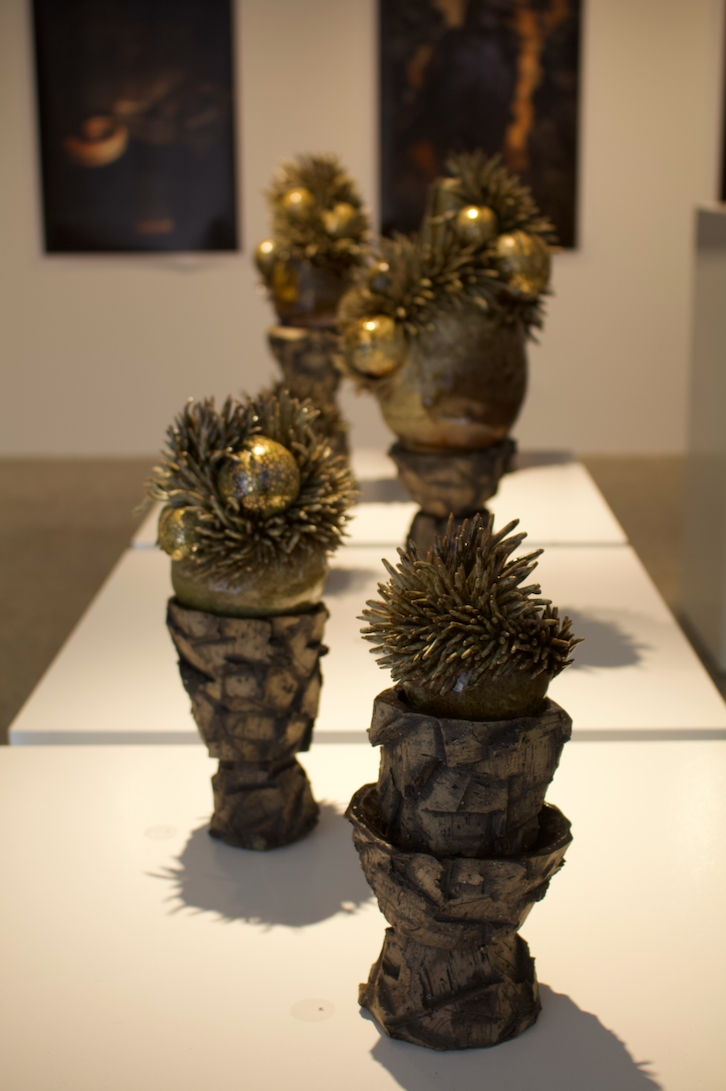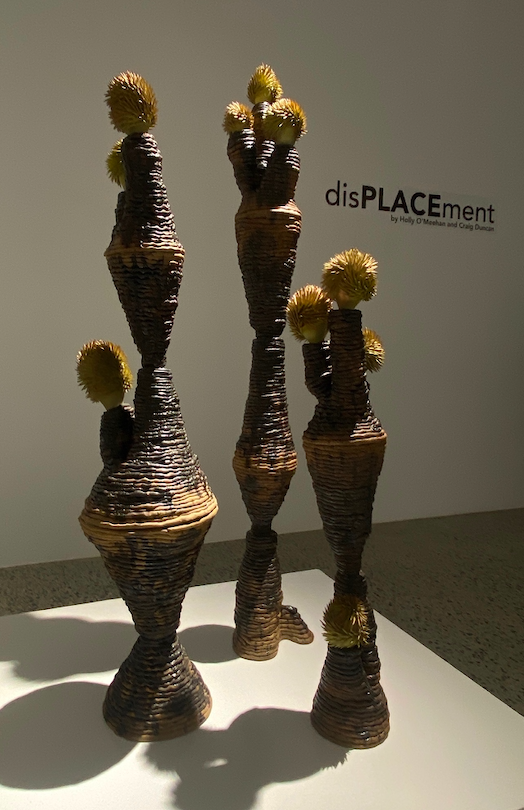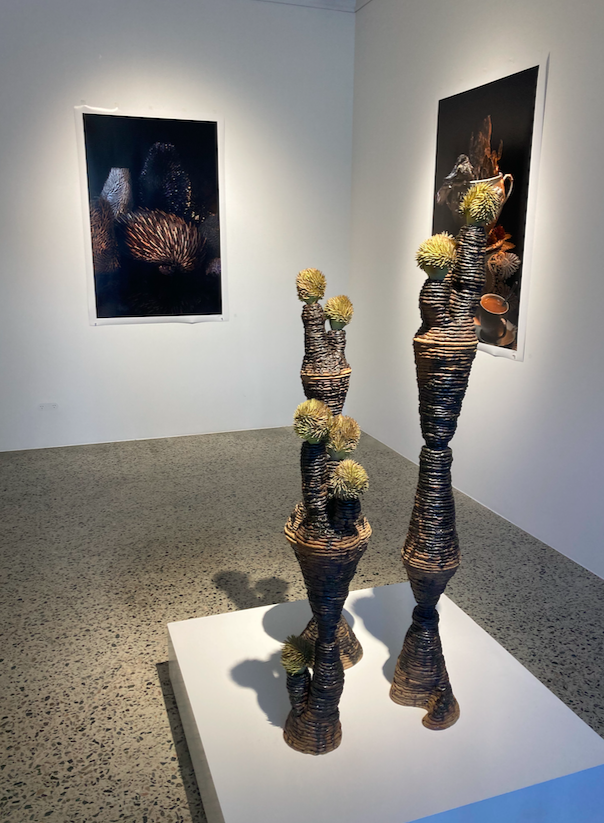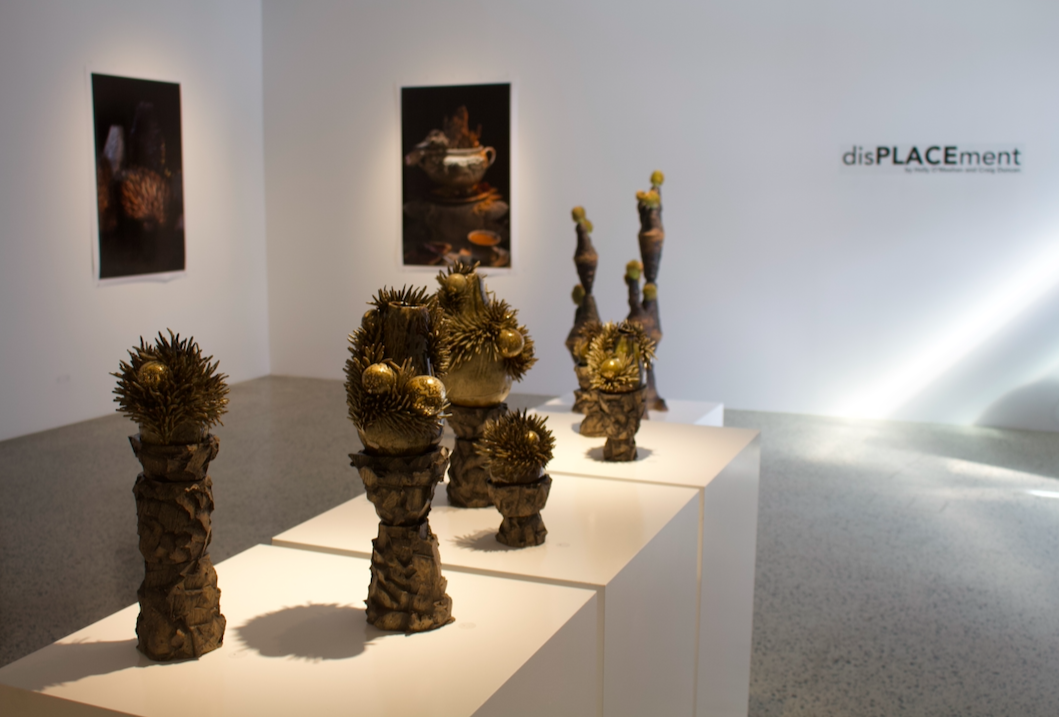disPLACEment
An Exhibition between Holly O’Meehan and Craig Duncan
at the Rockingham Arts Centre

Inspired by the unique endemic flora and my personal experience of growing up in the landscapes of the Great Southern regions of WA, the artworks I created for disPLACEment explores the worlds largest parasitic plant and the speculation that one day this plant will evolve into benefiting from its greatest parasitic competitor; humans.



“To be labelled a parasite carry’s a heavy load of negative connotations, the disgusting thought of a living organism sucking the nutrients out of its unwilling host; tapeworms, leeches and ticks just to name a few. However, not all parasitic life forms are viewed in such disdain or even commonly recognised as part of this category. The focus of this body of work falls with in the parasitic field, but its explosive beauty and gentle nature makes it hard to believe that it behaves in a similarly aggressive nature. The Nuytsia floribunda (scientific), Moodjar (Nyoongar), or Western Australian Christmas Tree is the worlds largest parasitic plant that is able to establish its self by hosting from multiple plants, both native and introduced, as well as other foreign objects such as drain pipes via there extensive root systems. Through tapping into multiple hosts, these plants have developed a gentle approach to being a parasite and in fact gives back to its local ecological system just as much as the rest of the environment. Despite the mass displacement of many native flora and fauna species across Australia, the WA Christmas Tree has for a long time been able to avoid this fate due to its spiritual importance to the Nyoongar people. Since the introduction of colonial agricultural methods over 100 years ago on Nyoongar boodjar/country, the land around a Moojar tree would be cleared to make way for introduced plants destined for annual cropping. Those tasked with the work of clearing however, often Nyoongar people, would purposefully leave these culturally significant trees. As the Moojar would lose its neighbouring host it would simply stretch it roots further and further to find its next host. Much like the mycelial networks of fungi, the root systems of the Nuytsia floribunda reaches farther than we can recognise from the surface but its reach is truly an inspiration for us humans, feeding our own more devious parasitic tendencies. Unfortunately, these trees are now also in a losing battle against humans with more and more land being cleared for agricultural, mining and infrastructure purposes, particularly in recent years as the population grows exponentially. So perhaps it is time to ask ourselves, do we not recognise the irony in our labelling of parasites while ignoring our own aggressive draining for the land’s resources?” - Catalogue Essay by Holly O’Meehan


The joint exhibition ran from April the 17th till May the 7th 2024.


I’d like to acknowledge and thank the Rockingham Arts Centre for supporting this project.